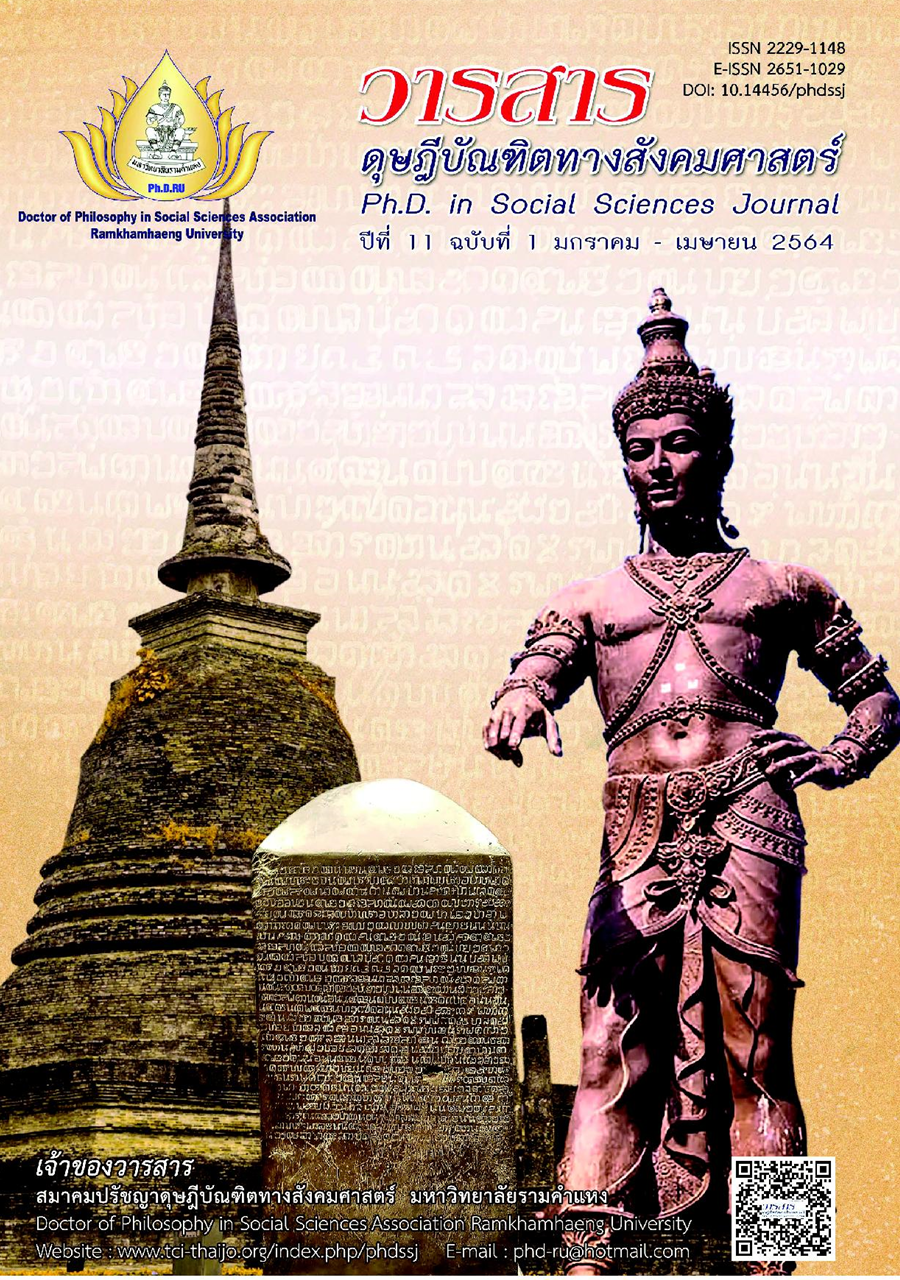Team Building Model for Executives to Manage Operation Teams in Hospitals
Main Article Content
Abstract
This research article aimed at (1) studying the team building models for executives to manage operation teams in the hospitals and (2) providing a guideline for effective operation teams in the hospitals. This research was conducted with qualitative method. The sample group composed of hospital business organizations obtained Thai Quality Class Award (TQC). The data were collected from 8 key informants who were the executives in charge of team building in the hospitals which obtained Thai Quality Class Award (TQC) from 2007 to 2016 through an in-depth interview.
Findings are as follows: (1) the hospital executives had the same opinion on 5 important aspects consisting of the followings; Diverse Team, Transformational Leadership, Team Empowerment, Team Innovative Behavior, and Team Effectiveness. (2) proposing guidelines for effective operation teams in the hospitals consisting of the followings sub-components; Diverse Team and Transformational Leadership. The Team Innovative Behavior consisted of the following sub-components; Diverse Team, Transformational Leadership and Team Empowerment. And guidelines for empirical effectiveness of management team needed the following sub-components; Diverse Team, Transformational Leadership, Team Empowerment and Team Innovative Behavior. All aspects are important for improving and enhancing the competitiveness of hospital business, and could serve as guidelines to implement in the same way as those successful organizations which obtained Thai Quality Class Award and integrate the academic concept to their operation in order to support 20-year national strategic goal which aims at healthy people, happy staff and sustainable health system.
Article Details
Academic articles, research articles, and book reviews in the Ph.D. in Social Sciences Journal are author’s opinions, and not the publisher’s, and is not the responsibility of the Ph.D. in Social Sciences Journal Philosophy Association, Ramkhamhaeng University. (In the case that research is done on human, the researcher has to be trained in Ethics for Doing Research on Human Training and has to produce the evidence of the training).
References
Alge, B. J., Ballinger, G. A., Tangirala, S., & Oakley, J. L. (2006). Information privacy in organizations: Empowering creative and extrarole performance. Journal of Applied Psychology, 91(1), 221-234.
Barney, J. (1991). Firm resources and sustained competitive advantage. Journal of Management, 17(1), 99-120.
Bartram, T., & Casimir, G. (2007). The relationship between leadership and follower in-role performance and satisfaction with the leaders: The mediating effects of empowerment and trust in the leader. Leadership and Organization Development Journal, 28(1), 4-19.
Drach-Zahavy, A., & Somech, A. (2002). Team heterogeneity and its relationship with team support and team effectiveness. Journal of Educational Administration, 40(1), 44-66.
Gondal, M., & Khan, A. (2008). Impact of team empowerment on team performance case of the telecommunications industry in Islamabad. International Review of Business Research Papers, 4(5), 138-146.
Ismail, A., Baizura, N., Abidin, N., & Tudin, R. (2009). Relationship between transformational leadership, empowerment and followers’ performance: An empirical study in Malaysia. Scientific e-journal of Management Science, 13(5), 5-22.
Jung, D. I., Chow, C., & Wu, A. (2003). The role of transformational leadership in enhancing organizational innovation: Hypotheses and some preliminary findings. Leadership Quarterly, 14(4/5), 525-544.
Kearney, E. & Gebert, D. (2009). Managing diversity and enhancing team outcomes: The promise of transformational leadership. Journal of Applied Psychology, 94(1), 77-89.
Kirkman, B. L., Tesluk, P. E., & Rosen, B. (2004). The impact of demographic heterogeneity and team leader-team member demographic fit on team empowerment and effectiveness. Group & Organization Management, 29(3), 334-368.
Ministry of Public Health. (2018). Strategic pan 20 years of public health. Author. [In Thai]
Paoluccia, N., Dimasb, I. D., Zappalac, S., Lourencoa, P. R., & Rebelo, T. (2018). Transformational leadership and team effectiveness: The mediating role of affective team commitment. Journal of Work and Organizational Psychology, 34(3), 135-144.
Peralta, C. F., Lopes, P. N., Gilson, L. L., Lourenço, P. R., & Pais, L. (2015). Innovation processes and team effectiveness: The role of goal clarity and commitment, and team affective tone. Journal of Occupational and Organizational Psychology, 88(1), 80-107.
Reuvers, M., Van Engen, M. L., Vinkenburg, C. J., & Wilson-Evered, E. (2008). Transformational leadership and innovative work behavior: Exploring the relevance of gender difference. Creativity and Innovation Management, 17(3), 227-244.
Seibert, S. E., Wang, G., & Courtright, S. H. (2011). Antecedents and consequences of psychological and team empowerment in organizations: A meta-analytic review. Journal of Applied Psychology, 96(5), 981-1003.
SETTRADE. (2017). Stock information. Retrieved from https://www.settrade.com/settrade/home#/home [In Thai]
Shalley, C. E., Zhou, J., & Oldham, G. R. (2004). The effects of personal and contextual characteristics on creativity: Where should we go from here? Journal of Management, 30(6), 933-958.
Steele, R., & Derven, M. (2015). Diversity & inclusion and innovation: A virtuous cycle. Industrial and Commercial Training, 47(1), 1-7.
Tahsildari, H., Hashim, M. T., & Wan, W. N. (2014). The influence of transformational leadership on organizational effectiveness through employees’ innovative behavior. Journal of Economics and Sustainable Development, 5(24), 225-236.
Wong, C. (2018). Viewpoint: How to empower a diverse international team. Retrieved from https://www.shrm.org/resourcesandtools/hr-topics/behavioral-competencies/globaland-cultural-effectiveness/pages/viewpoint-how-to-empower-a-diverse-internationalteam.aspx
Yuan, F., & Woodman, R. W. (2010). Innovative behaviour in the workplace: The role of performance and image outcome expectations. Academy of Management Journal, 53(2), 323-342.


